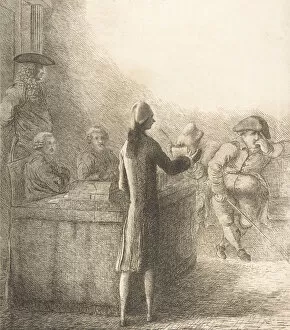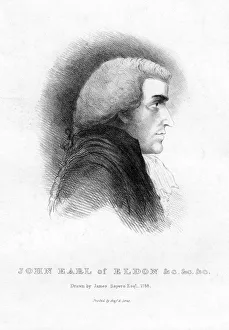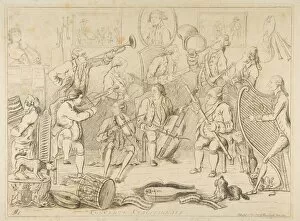James Sayers Collection
James Sayers: A Master of Satirical Art With his sharp wit and artistic talent
All Professionally Made to Order for Quick Shipping
James Sayers: A Master of Satirical Art With his sharp wit and artistic talent, James Sayers left an indelible mark on the world of political satire during the late 18th century. Born in England, this creative genius used his etching skills to create thought-provoking and humorous illustrations that captured the essence of the times. One of his notable works is "Cicero in Catilinam, " a satirical piece from March 17, 1785. In this artwork, Sayers cleverly depicts the power struggle between Cicero and Catiline, shedding light on contemporary political dynamics with a touch of humor. "The Mask, " created by Sayers on May 21, 1783, showcases his ability to capture facial expressions and emotions. Through intricate details and skillful shading techniques, he brings characters to life while simultaneously commenting on societal masks people wear in their daily lives. In "A Puff Off" from around 1782, Sayers takes aim at vanity and self-importance. With biting sarcasm and exaggerated features, he exposes the absurdity of those who puff themselves up with false pride or empty accomplishments. Sayers' work also delved into political commentary. In "Razors Levee" (April 21), he presents a witty critique of new wig administration through caricatures that exaggerate their hairstyles – symbolizing their inflated egos or lack thereof. "The Atlas of Landed Interest" (February 18) demonstrates another facet of Sayers' artistry as he combines visual elements with textual information to create informative yet entertaining pieces. This series became an invaluable resource for understanding land ownership patterns during that era. Not limited to politics alone, it also showcased his versatility by creating captivating portraits like Carlo Khan's triumphal entry into Leadenhall Street in 1783. His attention to detail brought historical events alive for viewers across generations. Sayers' work was not confined to standalone pieces.














